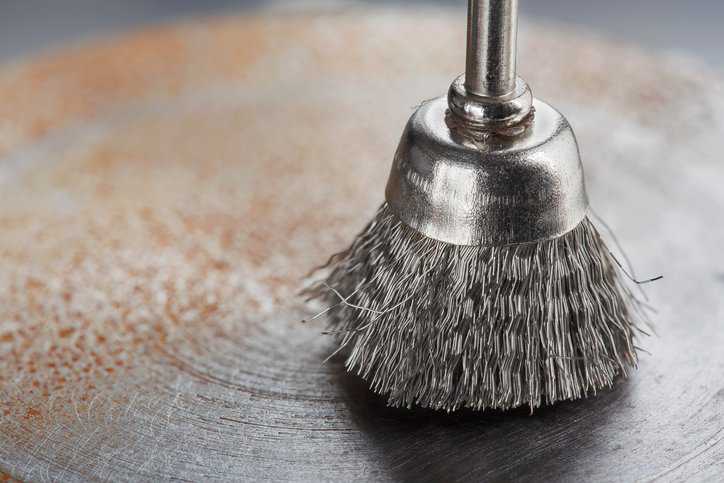ANSI B165.1-2019: Power-Driven Brushing Tools

Often used in industrial and commercial operations, power brushes are wheel-shaped brushing tools. They have custom-fit filaments or bristles that reduce defects caused by material buildup, while also efficiently deburring, polishing, and finishing final products. ANSI B165.1-2019: Power Tools – Power-Driven Brushing Tools – Safety Requirements for Design, Care, and Use covers safety specifications for brushing tools whose functional performance is accomplished by power-driven operation.
What Is ANSI B165.1?
ANSI B165.1-2019 establishes rules and specifications for safety that apply in the design, use, and care of power-driven brushing tools. The American National Standard covers brushing tools whose brushing elements are made up of ferrous wire, nonferrous wire, plastic, abrasive filaments, vegetable fibers, animal hair, or other materials, and brushes fabricated with any combination of such elements. ANSI B165.1-2019 also includes specifications for shanks, adapters, flanges, collets, chucks, and safety guards, as well as rules for the proper storage, handling, mounting, and use of brushes.
The standard aims to assist machine operators and their supervisors in maintaining and operating all types of brushing equipment, including portable power tools.
The standard does not cover brushing tools whose primary function is vehicle or train washing, carpet sweeping, dental hygiene, floor maintenance, sewer cleaning, street sweeping, and brushing tools.
How Do Power Brushes Work?
Power brushes are made of small diameter wire bits tightly bound together to clean different workpieces when rotated at high speed. Each brush wire serves as a cutting tool while in use; the composition of the brush wires is chosen based on the material of the workpiece. Further, the brush’s speed, placement, and design all influence the final surface finish achieved. Depending on the applications, power brushes can be operated manually or powered by machinery.
When Are Power-Brushes Used?
Power-driven brushes are primarily used in industries (e.g., automotive, manufacturing, metalworking, aerospace, food processing, construction, power generation, chemical processing, and healthcare) where the following applications are required on a large scale:
- Hole and cavity cleaning
- Removal of rust, slag, or paint
- Plastic flash removal
- Thread cleaning
- Paint or coating stripping
- Edge blending/deburring
- Weld preparation and weld cleaning withing chamfers or pipe heads
Power Brush Safety
In normal power brushing operations, the material being removed (such as burrs, scale, dirt, weld slag, or other residue) will fly off the brush with considerable force along with the brush filaments, which break off due to fatigue. Hence, power brushes should be used with caution, as debris may fly off surfaces when the power tool is in use. As such, those performing power brush operations should wear the proper protective clothing, proper guarding, and particularly, eye protection.ANSI B165.1-2019 specifies that the operator and others in the area are required to wear protective eye equipment and face equipment, such as safety goggles or full-face shields, worn over safety glasses with side shields, along with protective clothing.
ANSI B165.1-2019: Power Tools – Power-Driven Brushing Tools – Safety Requirements for Design, Care, and Use is available on the ANSI Webstore.






